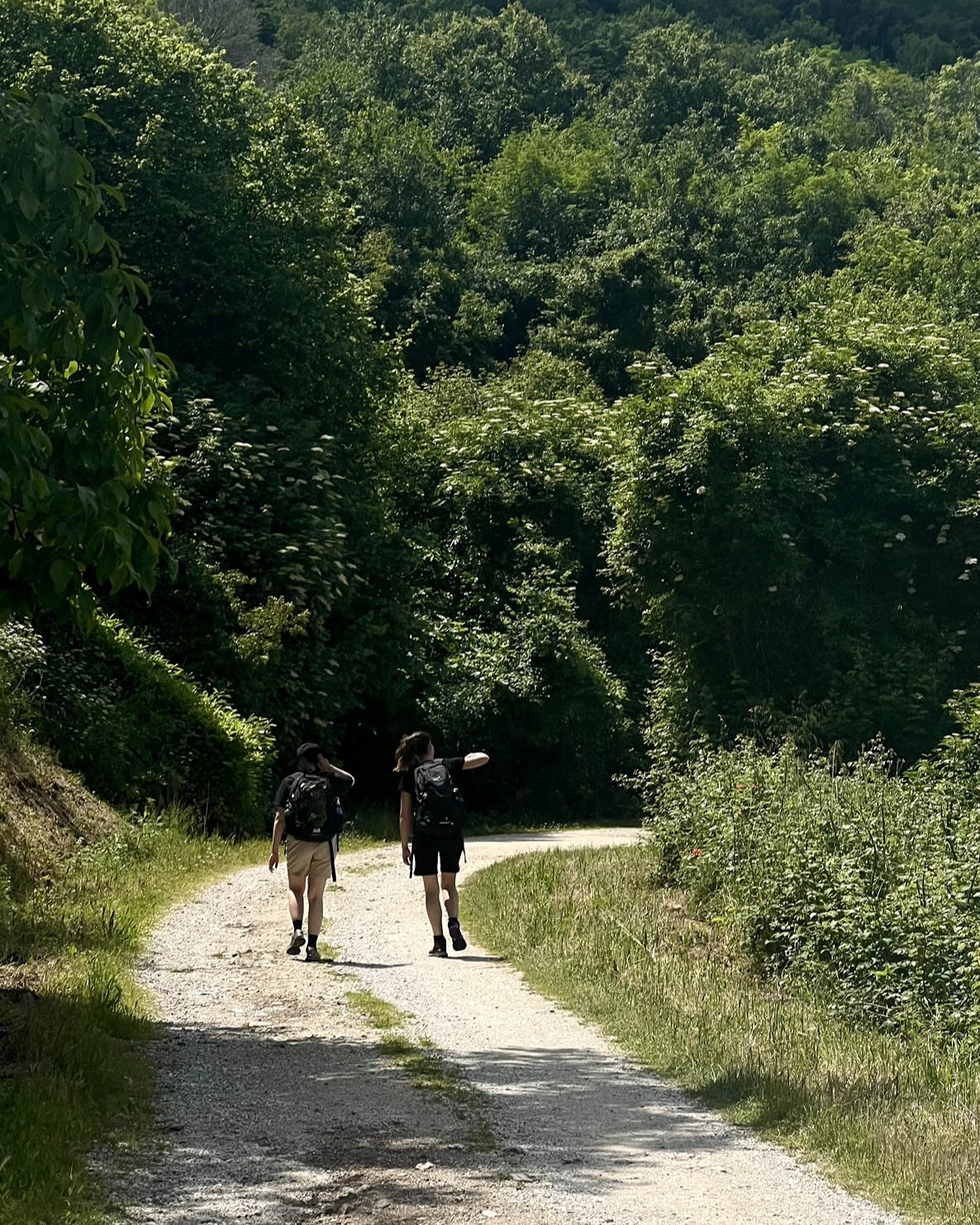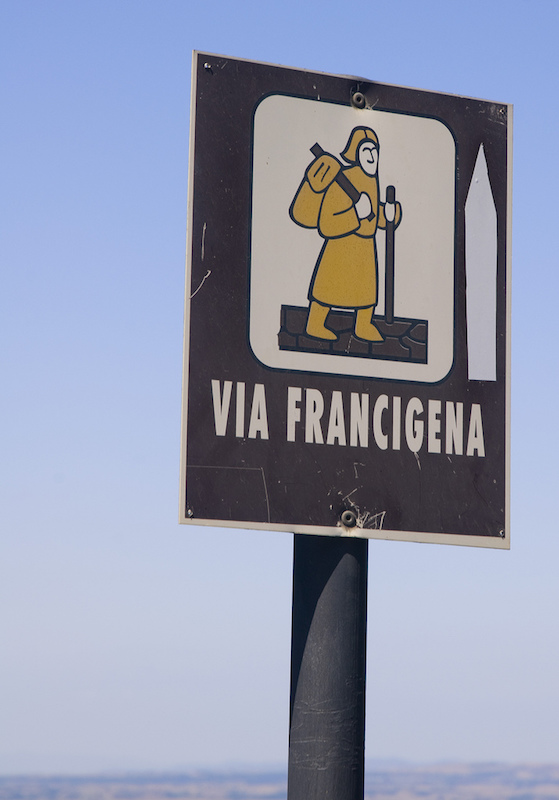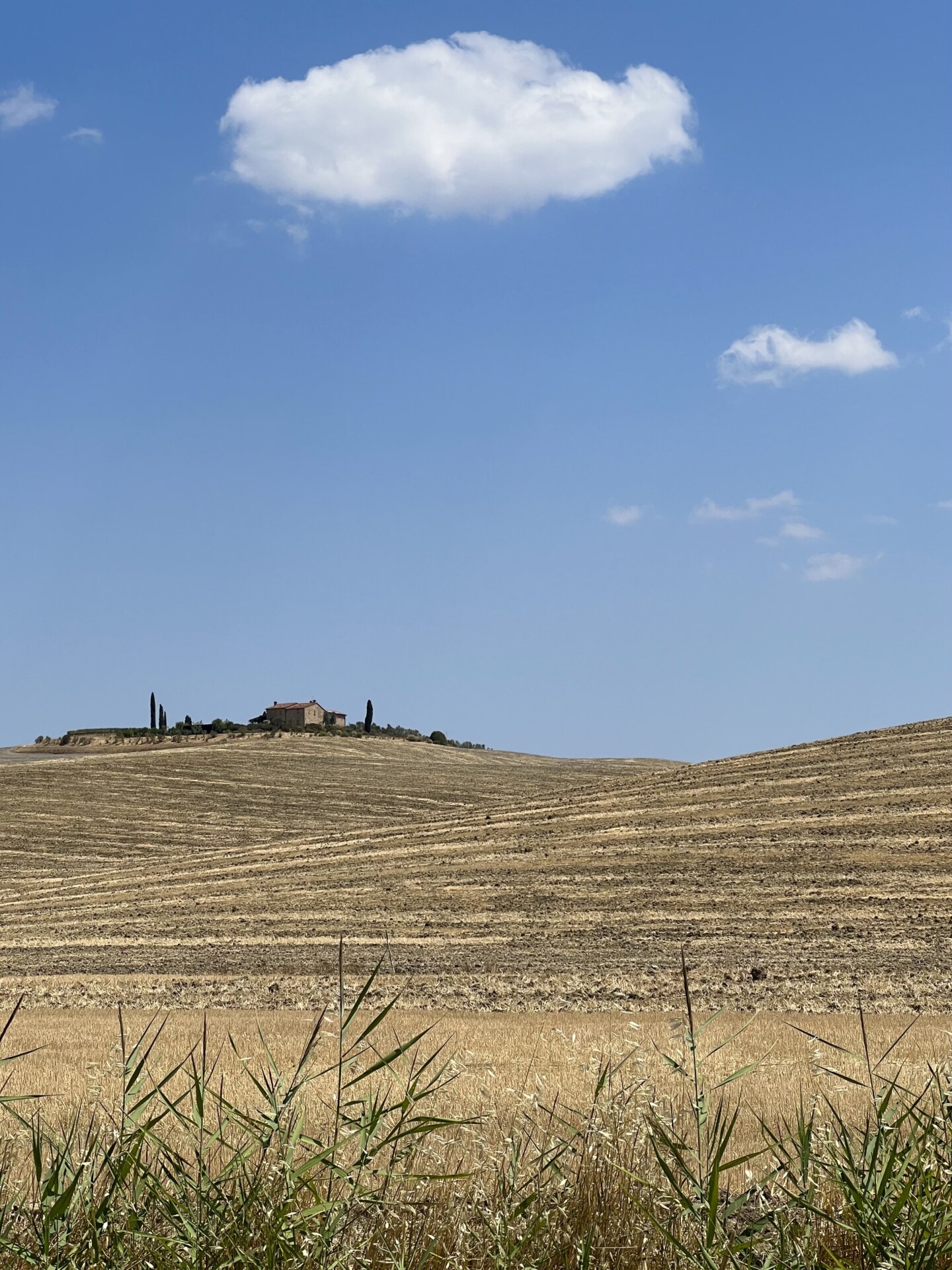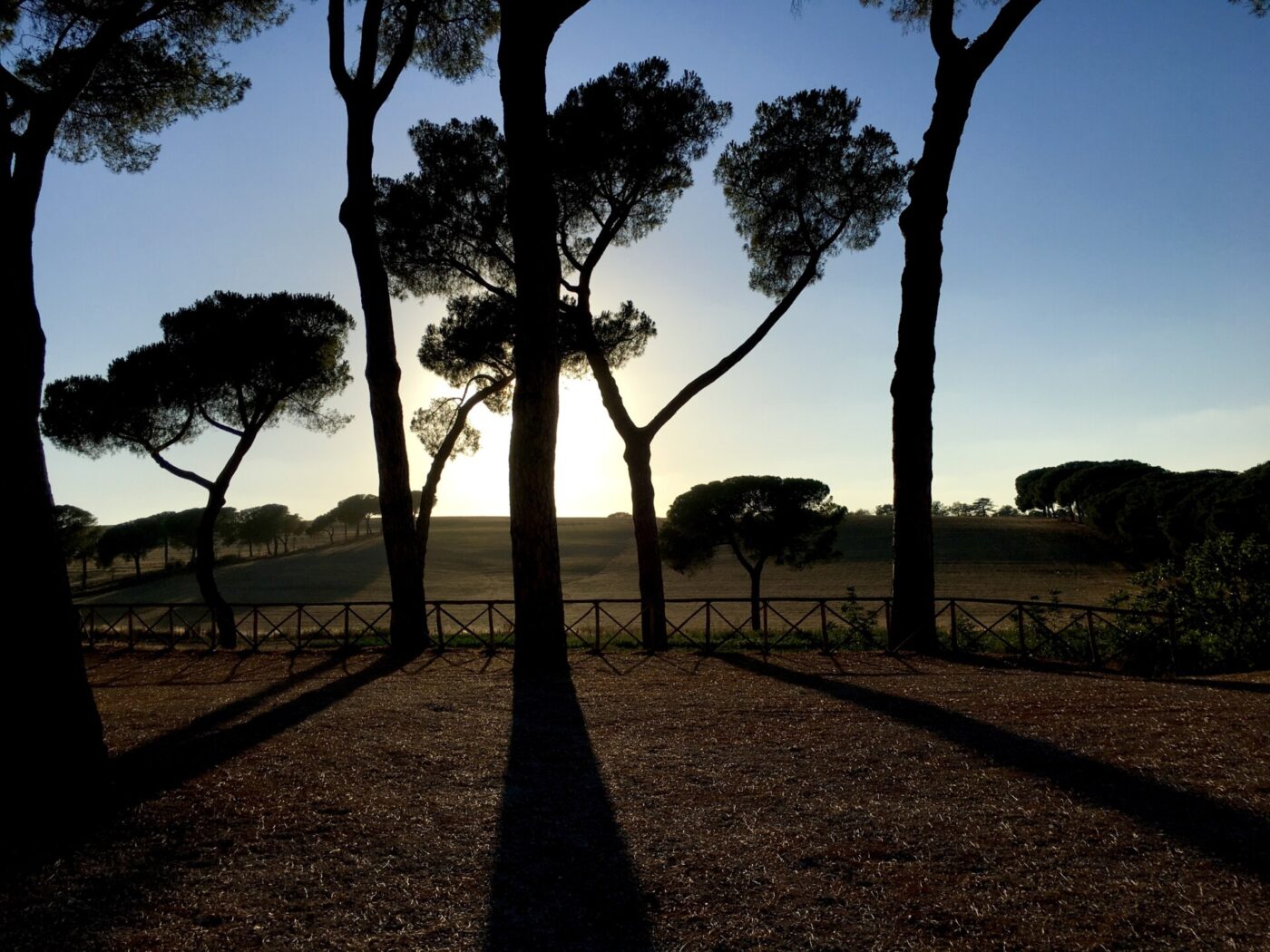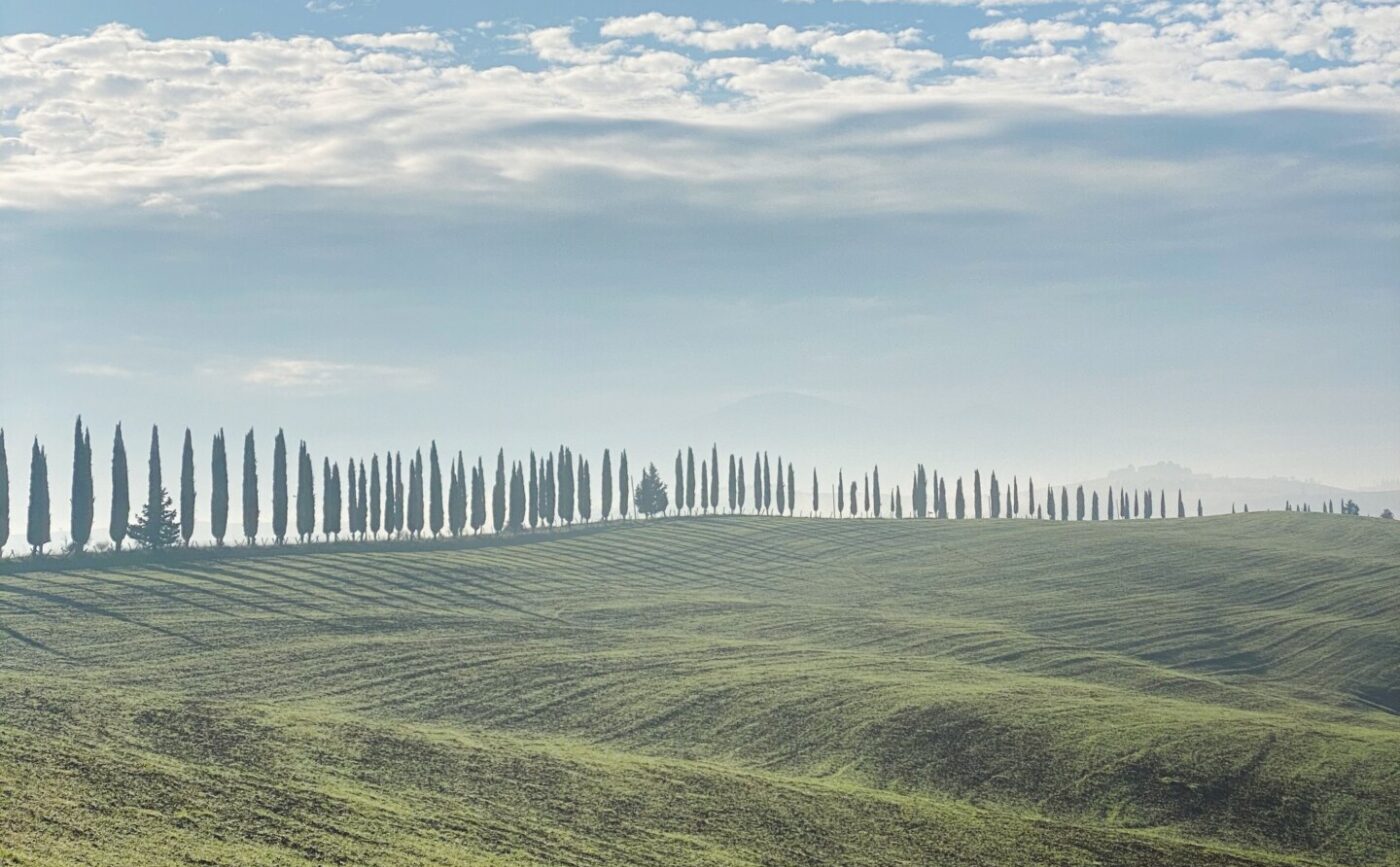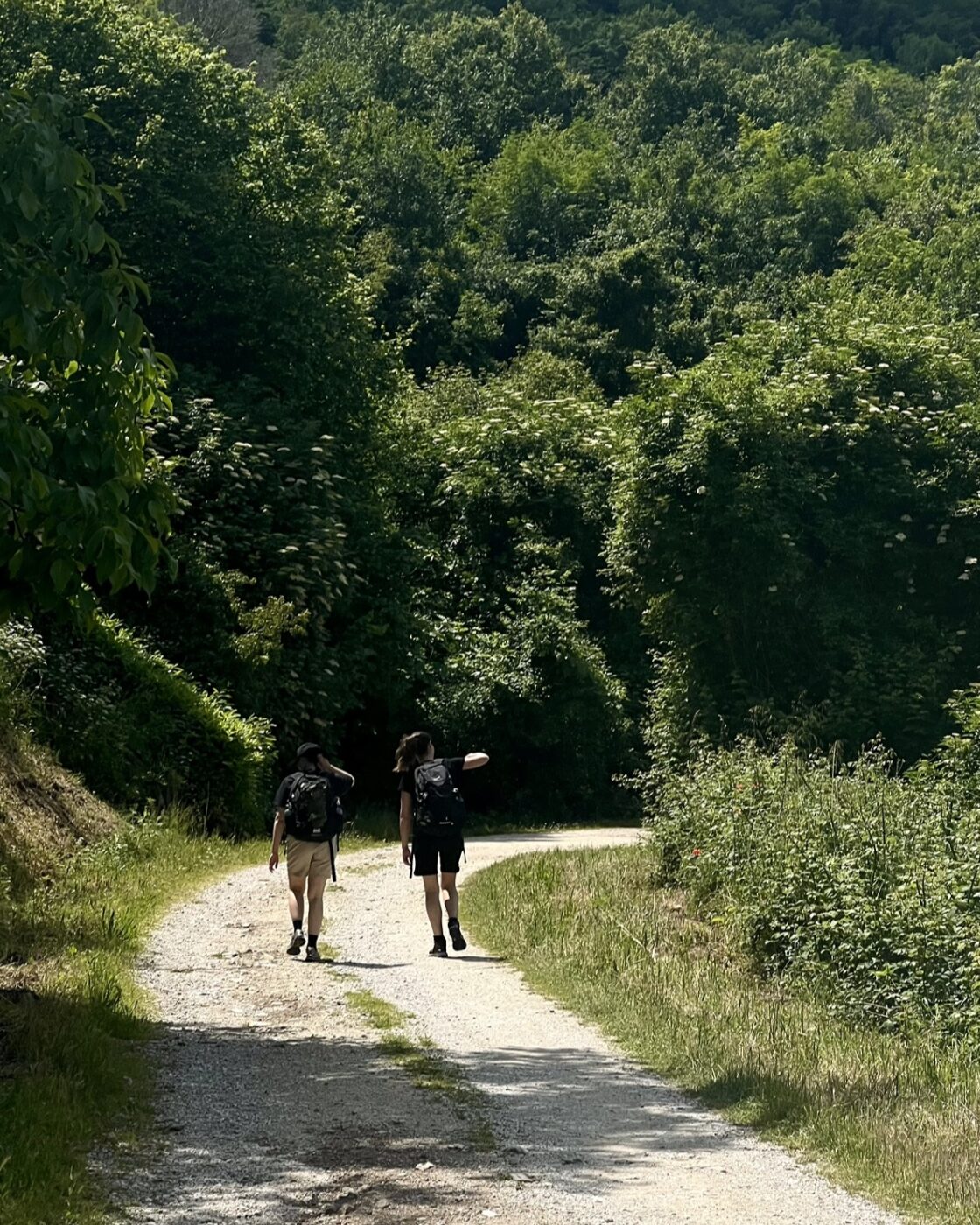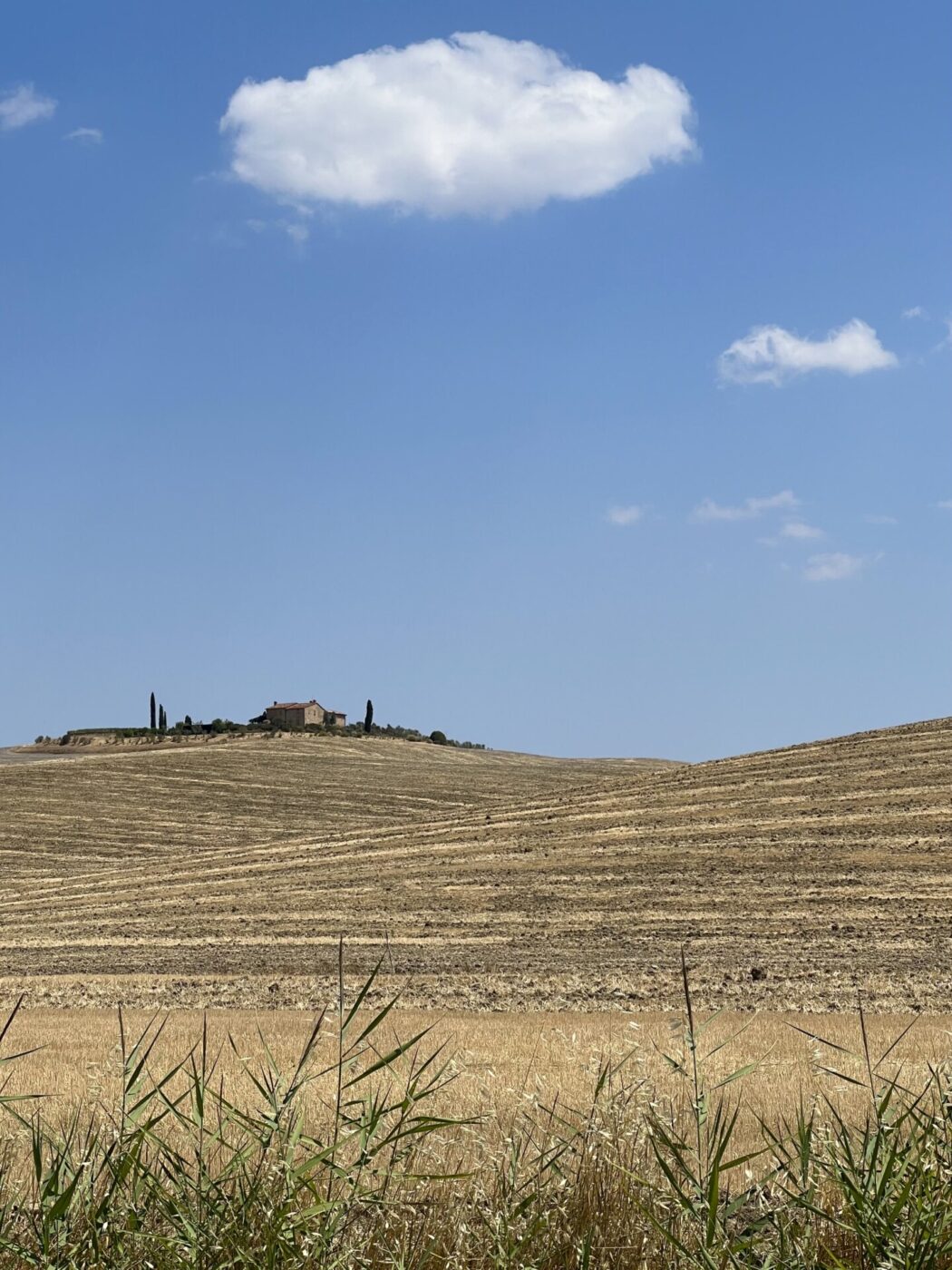I’d been living in Siena for almost a year by the time I registered the signs inside the city’s arched porte indicating the Via Francigena; with their faded green illustrations of the route and minuscule print, they were inconspicuous beside the color-coded tourist maps of the city. But as the spring brought warmer weather, I began to see hikers studying these every morning as I walked to my lectures. A little research informed me that the “hiking trail” is actually a thousand-year-old pilgrimage route, covering more than 2,000 kilometers of paths and traversing four borders on the journey from Canterbury, England, to Rome.
Like much of Italy’s food, architecture, and even dialects, this path finds its origin in the country’s multiculturalism. By the late 6th century AD, the Lombards laid claim to all of northern Italy and much of the south, but these territories were fractured by a strip of Byzantine dominion. In order to establish a strategic link with their meridional dukedoms, the Lombards cleared a road that skirted just east of Byzantine territory–loosely situated in the modern-day regions of Le Marche and Umbria–and merged with the existing Roman road Via Cassia. The Franks took over from the Lombards in 774, renaming the path as we know it today la Via Francigena, “the road from France”.
The Francigena became a fundamental conduit between northern and southern Europe, tying together continent-wide military, religious, and mercantile pursuit and, in turn, embodying a sense of European cultural unity. Under Frankish control, conflicts over Italian territory ceased to shape the Via Francigena, and, instead, the road began to fulfill a religious function; pilgrimage was alla moda, and Rome was not only an important Christian hub in its own right, but also a well-situated pitstop on the journey down to Puglia and on to the Holy Land by boat (a crossing known then as the Pasagiumultramarinum!). In the other direction, Italian pilgrims seeking Santiago de Compostela in Spain trod the Via Francigena up and over the Alps. This religious itinerary was largely plotted to weave between churches and monasteries, creating long detours that could no longer be justified as the Via Francigena took on its third purpose: trade. By the 16th century, more direct routes had taken precedence in order to connect emerging commercial centers, and so long stretches of the original path fell into disuse. What’s more, the tread of centuries’ worth of feet had worn away at the cobblestoned Roman track, leaving beaten earth, which was more susceptible to the destructive forces of nature and time.
Recreating the entire Via Francigena in modern times would have been impossible were it not for Archbishop Sigeric the Serious’s travel diary from the year 990. Departing from Rome, where he had just been ordained by Pope John XIV, Sigeric traveled north to the Val d’Aosta where he crossed the St Bernard Pass into Switzerland, and later the border into France. From there, he journeyed up to Wissant near Calais, where he crossed the English Channel by boat, before returning to Canterbury Cathedral in southwest England. In the late 1980s, a group of enthusiasts diligently traced the steps recorded in Sigeric’s diary and were able to put his itinerary back on the map, bar a few minor adjustments where the ancient track had been replaced by motorways. The path’s historical divergences and detours remain the secret of the soil.
Following in the footsteps of the archbishop myself, my friend and I decide to borrow a fraction of Sigeric’s itinerary–a 20 km (12.4 mi) stretch from Monteriggioni to Siena–with just a printed-out map, a portable chessboard, and two liters of water in our rucksacks.
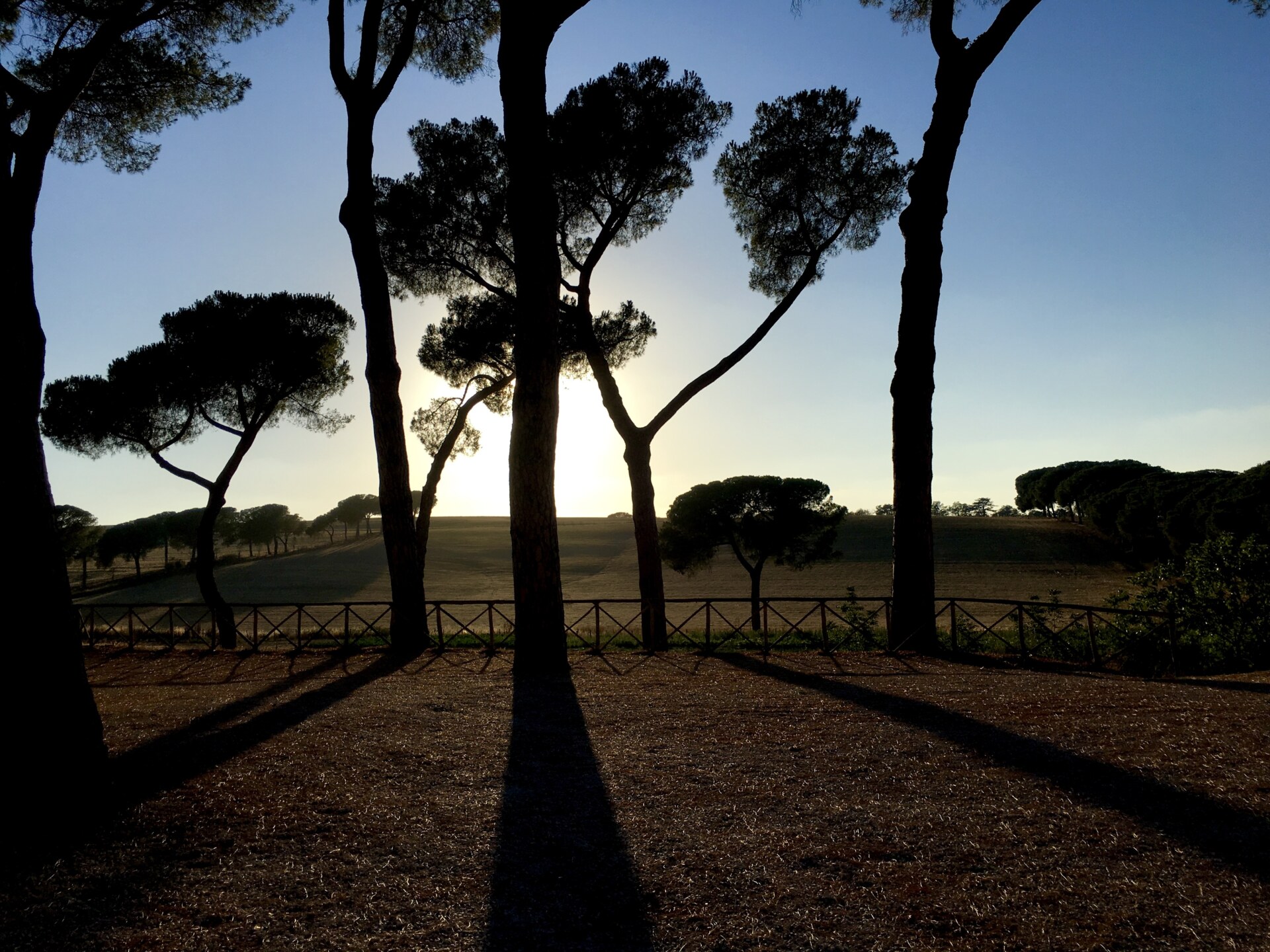
9:30 We sit in the still, silent piazza of Monteriggioni and enjoy a cornetto and cappuccino. Surrounded by stone watchtowers built by Siena in 1213, the hamlet is a set of Tuscan military history. Climbing up onto the hamlet’s walls, a layer of clouds still cools the hills. This “crown of towers” was famously the inspiration for the circle of giants surrounding Lucifer in Dante’s Inferno.
10:30 We tear ourselves away from that little idyll and hit the Via. At the top of the first climb, we turn to see Monteriggioni resting like a miniature tiara on the hillside. The red and white painted signposts with the bold inscription “VF” offer regular reassurance that we’re on the right track.
11:30 It being early May, the wooded stretches are lined with banks of red poppies and lilac irises, the meadows verdant, and the fields dotted with cactuses and grazing horses. We packed just enough water to last until the first fountain; there are various water sources situated at rather irregular intervals along the way. Just before midday, the picture-perfect il Castello della Chiocciola (Snail Castle) rises into view, named for its tower’s spiral staircase. It’s remarkable to take in such views without queues and crowds. In fact, we’re just one of three small groups hiking the stretch today, less likely on the more trodden paths between Tuscany’s wineries and agriturismi–which isn’t to say they don’t offer pleasures of their own.
12:30 We come across a place that, at first sight, seems just a courtyard full of eclectic outdoor furniture and bathtub-raised-beds of homegrown vegetables, but turns out to be Marcello’s charming walkers’ refuge, La Villa. For a small donation, we’re given a shady deck chair, a cold beer, and a slice of homemade panettone. Shoutout to the free sanitary products in the bathroom and hugs from old Bacco the dog. Refuges like this mark the length of the Via, offering sleeping and cooking facilities for those hiking longer stretches. They vary in availability throughout the year–it’s advisable to hike the Via in the warmer months due to minimal accommodation and harsh conditions on the St Bernard Pass during the winter.
In his Racconti Senesi, Sienese writer Federigo Tozzi described a Tuscan walker’s refuge in the early 1900s. Inside the osteria, wayfarers gathered around a “gran camino con bagliore di fuoco”/“a large fireplace with a blazing fire” together with their animals, producing “un vocio assordante”/“a deafening chatter”. In Marcello’s cabins, there are simple bunk beds and no livestock, but the atmosphere is much the same as I imagine Tozzi’s inn to have been.
13:00 On the next leg, we settle into that low countryside hum of tractors and bees and gentle movement in the trees. At times, rows of quintessentially Tuscan cypress trees cool the dusty tracks with their shade; at others, the sun beats down and the white paths radiate heat. Our conversation meanders with us, and the kilometers begin to walk themselves.
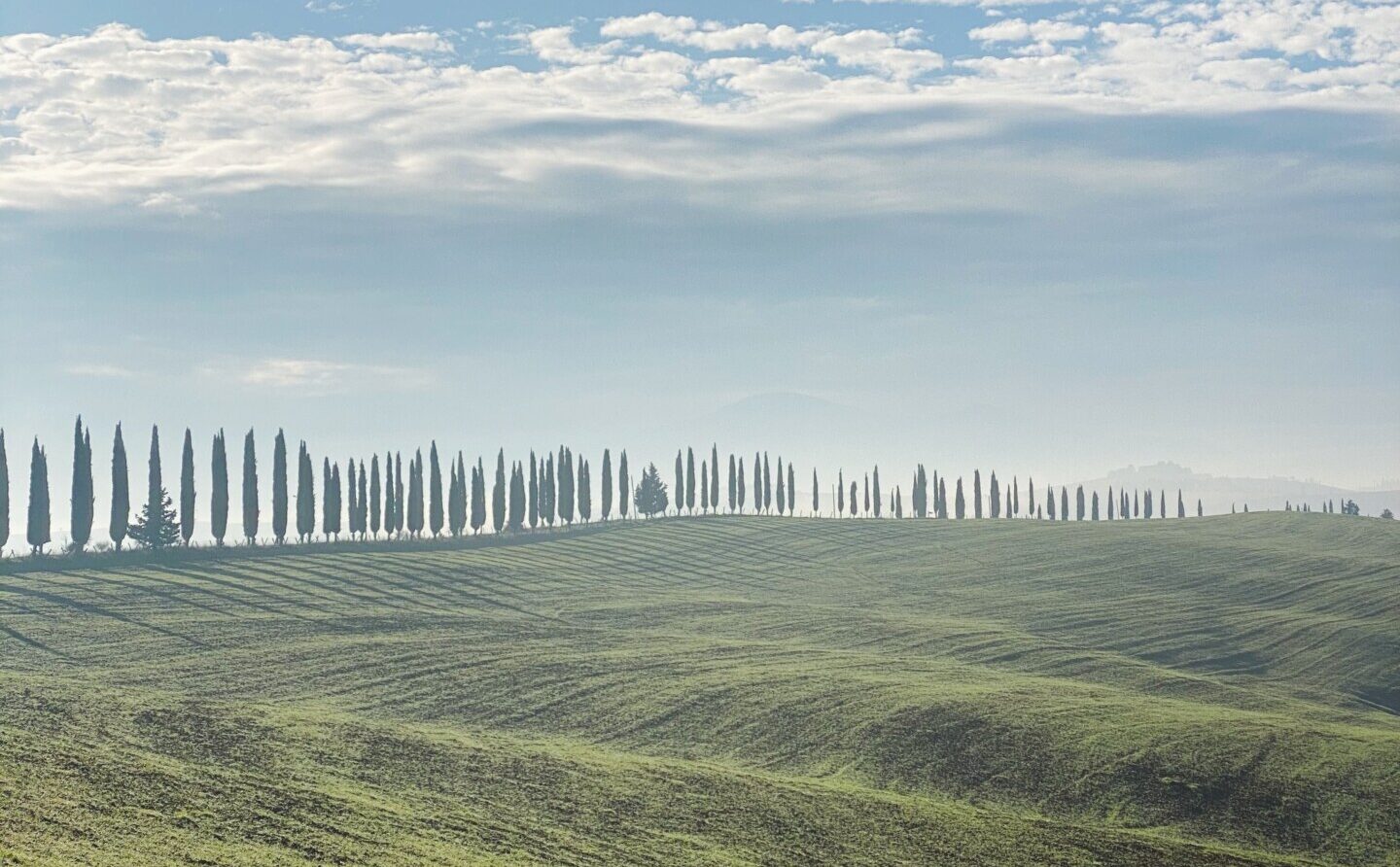
14:30 When the path opens into a dappled glade, we sit down at the lone picnic table for a snack and game of chess. The heat must have gone to my head, as it’s a quick win for my opponent.
15:30 Approaching Siena from the West, we pass the Riding Club, which is the first sign of urban life since Monteriggioni had disappeared behind the trees. Soon, the woodland tracks are replaced by paved roads in the suburbs. A couple of steep climbs lead us out of the woods and up to familiar territory. At 16:45, we arrive at Porta Camollia and continue straight to the piazza.
17:00 Spritzes in hand, our mission is complete.
The Via Francigena is one of many walking routes across Italy which reward those who opt for “slow” tourism with sweeping views of mountain ranges, lakes, volcanoes, dramatic coastlines, and expanses of empty woodland. But these ancient roads have not always been considered “off the beaten path”; soldiers, pilgrims, merchants, and shepherds forged them as a matter of necessity. With access to high-speed travel, we evidently no longer need routes like the Via Francigena to get from A to B, but these paths must continue to be trodden to be preserved. Walking can therefore be considered a wilful act of reclamation, and along the way you might just gain something in return. Later, walking–this time, to class again–past those sage-coloured signboards, I was reminded of what was written in tiny font beside the map:
Il Cammino, come la vita, non è una competizione. Mai farsi prendere dalla voglia di fare troppo: il tuo organismo te ne chiederà presto conto. Guardarsi intorno, osservare, fermarsi, assaporare. Questo è ciò che ti insegnerà il Cammino.
This walk, like life, is not a competition. Never get carried away by the desire to do too much: your body will soon demand an explanation. Look around, observe, stop, and taste. That’s what this walk will teach you.
